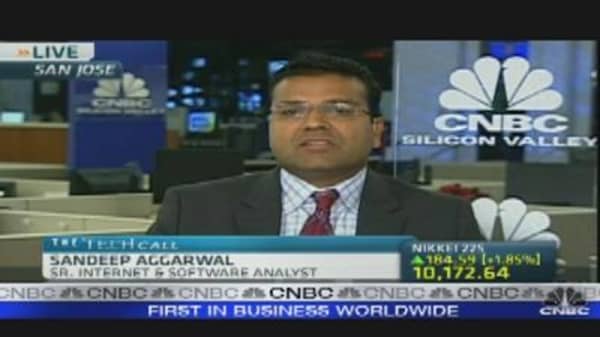As investors fret that Google’s $6 billion bid for Groupon is too high a price to pay, new details about the company’s sales and growth suggest that it might be more like one of Groupon’s cut-rate deals.
An individual close to Groupon, who spoke on condition of anonymity, said the company’s annual revenue is running in excess of $1 billion a year and its subscriber base tripled this summer, to 35 million users.
And an analyst at Barclays Capital, Douglas Anmuth, estimated in a research report released on Tuesday that sales could hit $1.5 billion in 2011.
At those levels, Google would be paying four times next year’s revenues. In contrast, the company paid $3.1 billion, or roughly 10 times sales, for DoubleClick in 2007. It bought YouTube for $1.65 billion in 2006, when the online video hub was making less than $11 million a year, according to a company filing.
Also this week, Groupon disclosed new features, including a three-tiered pricing system, that would fundamentally change its business model and accelerate growth, focusing on local markets, although most likely at the expense of margins.
Groupon’s founder, Andrew Mason, is unconcerned. His strategy, he said in an interview by phone on Wednesday, is “finding the holy grail of local.”
“Since the days of CompuServe, everyone was thinking how the Internet will transform the way local business is done,” said Mr. Mason. “I think we’re well positioned.”
Stock in Google rose about 1.5 percent on Wednesday, regaining a portion of the 4.5 percent decline on Tuesday, the day after the bid was reported.
Since its start in 2008, Groupon has focused on offering only a limited number of coupons a day. According to Mr. Mason, the company passes on seven deals for each one it selects, adding that Groupon fields 1,000 requests a day from vendors.
That backlog has spawned scores of imitators scavenging for Groupon’s castoffs. In the last year, LivingSocial, Gilt City and BuyWithMe have begun operating in the local advertising space.
Now Groupon is changing its model in response to competition and critics who say deals are too few and the cost is too high. The standard commission rate is 50 percent. For that price, a vendor’s coupon becomes the featured deal of the day in a certain city.
Under a new pilot program in Chicago, Dallas and Seattle, Groupon will let vendors set up free microsites, called Groupon Stores, to promote their deals. Local offers, tailored to users’ interests, are also aggregated on the “Deal Feed” page.
Vendors can then opt to offer a deal with a 10, 30 or 50 percent commission. The higher the commission the more consumers the coupon can potentially reach. At the 10 percent level, vendors can offer deals on their microsite, as well as push them to past consumers and current followers.
Groupon plans eventually to introduce the program across its 300 markets.
“This is about a whole new wave in advertising displacement. Groupon will have more reach to more merchants, in more cities,” said Ira D. Cohen, managing director of Signal Hill, a boutique investment bank. “The new features may take a bit away from the uniqueness and excitement of the one deal a day model, but this is probably a very good thing for Groupon.”
As a fledgling directory of local stores, Groupon may be a good complement to Google Places, where businesses can create their own page. Some analysts say it may also become a closer rival of Yelp, a review site that Google tried to acquire last year.
Planned features on Groupon will expand the social networking element to the site. Soon users will be able to send alerts on new deals, trade coupons they bought or share recent purchases. The social networking aspects are important, said Allen P. Adamson, managing director of the New York office of Landor Associates, a brand marketing firm, helping to create stronger bonds between consumers and vendors.
“There’s an opportunity for someone to transform the way people buy from local businesses in the same way that e-commerce has changed the way people buy products,” Mr. Mason said.




